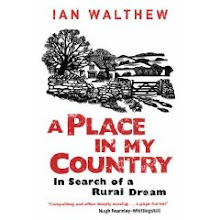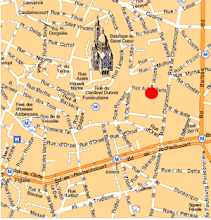Monday 28 July 2008
Coca farmers in Colombia
It may seem strange to post on coca cultivation, the end product being cocaine, 90% of which is consumer in the United States. But coca farming is farming like any other in its basic biological and sociological respects, whatever your views on cocaine.
It's interesting to compare this article below with another I recently posted from the NYT Magazine about opium farming in the Afghanistan.
Like it not, the producers of the raw commodity behind cocaine and opium are farmers, farmers who are extremely poor and who need alternatives.
In my view eradication programmes only work if complemented by agricultral investment into alternative crops. In Geneva, at the WTO, they are trying to bash out an end to farm subsidies in the USA and Europe, or at least a reduction, and in the import tariffs on agricultural goods from countries like Colombia.
We in Europe and the USA bear much of the responsibility for the problems these farmers face because we consumer their product that we try to destroy, and we prevent them from easily competing in our markets on a level playing field of tariffs and subsidies.
If anyone can find a blog by a coca producer in Colombia, hats off to them! But some real on the ground insight into what is going in, through the views of voiceless farmers in these regions, is what we all need to understand and resolve the problem.
Personally, I am not entirely unconvinced that complete legalisation of both heroin and cocaine would not be the more sensible way to go. But that's another story of complex social, economic, security and development issues.
No end in sight for Colombia fighting
The United Nations reported in June that coca cultivation in Colombia surged 27 percent in 2007 to about 99,000 hectares, or around 245,000 acres, the first significant increase in four years.
Nariño had the largest increase of any Colombian department, or administrative district, up 30 percent to 20,300 hectares.
The expansion has allowed Colombia to remain the world's largest coca producer and the supplier of 90 percent of the cocaine consumed in the United States.
It has also made the drug-fueled conflict a resilient virus in large pockets of the country, with double-digit increases in coca cultivation in at least three other departments, Putumayo, Meta and Antioquia. In Nariño, almost every week, government officials, Roman Catholic leaders or aid workers report actions by the rebels or paramilitary groups.
In the last week of June, four schoolteachers in remote areas of the province were killed by a FARC column called Mariscal Sucre, one of three units of the FARC that are active in the area.
The rebels claimed that the schoolteachers, all of them recently posted to remote schoolhouses by Roman Catholic officials, were army informants.
Just weeks before, in April, the FARC knocked out power for 300,000 residents along the Pacific coast with an attack on an electrical station. Colombian soldiers also found eight fuel-processing depots - holding 77,000 barrels of oil - used by the guerrillas for fuel and to process coca into cocaine in makeshift labs.
Nationwide, the FARC still collects $200 million to $300 million a year by taxing coca farmers and coordinating cocaine smuggling networks, according to Bruce Bagley, a specialist on the Andean drug war who teaches at the University of Miami.
That is down from $500 million earlier this decade, Bagley said, but it is still enough to finance the FARC after recent desertions and killings that have thinned its ranks to about 9,000 from 17,000.http://www.iht.com/articles/2008/07/27/america/colombia.php
It's interesting to compare this article below with another I recently posted from the NYT Magazine about opium farming in the Afghanistan.
Like it not, the producers of the raw commodity behind cocaine and opium are farmers, farmers who are extremely poor and who need alternatives.
In my view eradication programmes only work if complemented by agricultral investment into alternative crops. In Geneva, at the WTO, they are trying to bash out an end to farm subsidies in the USA and Europe, or at least a reduction, and in the import tariffs on agricultural goods from countries like Colombia.
We in Europe and the USA bear much of the responsibility for the problems these farmers face because we consumer their product that we try to destroy, and we prevent them from easily competing in our markets on a level playing field of tariffs and subsidies.
If anyone can find a blog by a coca producer in Colombia, hats off to them! But some real on the ground insight into what is going in, through the views of voiceless farmers in these regions, is what we all need to understand and resolve the problem.
Personally, I am not entirely unconvinced that complete legalisation of both heroin and cocaine would not be the more sensible way to go. But that's another story of complex social, economic, security and development issues.
No end in sight for Colombia fighting
The United Nations reported in June that coca cultivation in Colombia surged 27 percent in 2007 to about 99,000 hectares, or around 245,000 acres, the first significant increase in four years.
Nariño had the largest increase of any Colombian department, or administrative district, up 30 percent to 20,300 hectares.
The expansion has allowed Colombia to remain the world's largest coca producer and the supplier of 90 percent of the cocaine consumed in the United States.
It has also made the drug-fueled conflict a resilient virus in large pockets of the country, with double-digit increases in coca cultivation in at least three other departments, Putumayo, Meta and Antioquia. In Nariño, almost every week, government officials, Roman Catholic leaders or aid workers report actions by the rebels or paramilitary groups.
In the last week of June, four schoolteachers in remote areas of the province were killed by a FARC column called Mariscal Sucre, one of three units of the FARC that are active in the area.
The rebels claimed that the schoolteachers, all of them recently posted to remote schoolhouses by Roman Catholic officials, were army informants.
Just weeks before, in April, the FARC knocked out power for 300,000 residents along the Pacific coast with an attack on an electrical station. Colombian soldiers also found eight fuel-processing depots - holding 77,000 barrels of oil - used by the guerrillas for fuel and to process coca into cocaine in makeshift labs.
Nationwide, the FARC still collects $200 million to $300 million a year by taxing coca farmers and coordinating cocaine smuggling networks, according to Bruce Bagley, a specialist on the Andean drug war who teaches at the University of Miami.
That is down from $500 million earlier this decade, Bagley said, but it is still enough to finance the FARC after recent desertions and killings that have thinned its ranks to about 9,000 from 17,000.http://www.iht.com/articles/2008/07/27/america/colombia.php
Subscribe to:
Post Comments (Atom)





















No comments:
Post a Comment